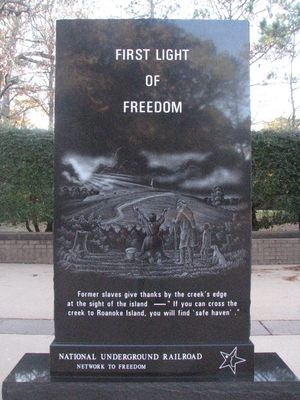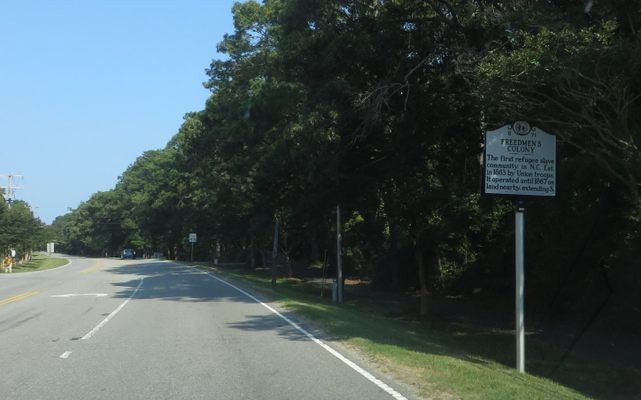About
Roanoke Island on the Outer Banks of North Carolina is famous for being the site of the "Lost Colony" of Roanoke, the first attempted English settlement in the New World, a group of around 115 settlers who mysteriously disappeared in the late 1580s. What few people realize is that there was another short-lived colony here that is just as significant to the history of the United States: a thriving community of formerly enslaved people that lived on the island as free citizens during the Civil War.
At the start of the war, Confederate fortifications were built on Roanoke Island to protect the state’s strategic waterways. But in 1862, Union troops captured the island. The enslaved people who lived there were considered contraband of war and given freedom and protection by the Union army. When word of this got out, Black families from across the state poured into the safe haven. Within a year, churches, a schoolhouse, and hundreds of homes were built and a community of formerly enslaved people flourished.
As word spread, the number of migrants continued to grow. By 1863, when the Emancipation Proclamation officially freed enslaved people in Union-controlled areas, more than 1,000 Black Americans were living in what was now the largest settlement of freedpeople in the South. The Federal government re-designated the contraband camp as an official colony of freedpeople.
The northern end of Roanoke Island was laid out as a village and families were assigned plots of land. For many blacks, this historic experiment was their first experience of freedom and opportunity. Men and women worked as paid tradespeople, farmers, or for the Union army. Teachers were brought in from the North and children and adults were educated. When black men were allowed to join the Union army, the colony served as a refuge for their families.
Though the vision was to establish a fully independent colony on Roanoke Island, the experiment unfortunately only lasted a few short years. So many formerly enslaved people flocked to the island that overcrowding caused sanitation problems. As more working men enlisted in the army, families became increasingly dependent on the government, and the soil proved too poor to make a living from farming. When the war was over, the lands that had been confiscated from the Southerners to establish the colony were returned to their original owners. The black residents weren't given the rights to the lands they had lived and worked on for years, and most returned to the mainland.
In 1865, an estimated 3,900 freedpeople were living on Roanoke Island, but that number dropped in half by the following year. The colony was abandoned by 1867. Still, around 60 households continued to live on the island, and some of their descendants remain there today.
As no physical evidence of the settlement remains, this important chapter in the American story was almost forgotten and lost to history. But on the island today, you'll find a small sign and marble monument commemorating the historic colony, which is now recognized as a site on the National Underground Railroad Network to Freedom.
Related Tags
Know Before You Go
The site of the Freedmen's Colony is part of the Fort Raleigh National Historic Site in the town of Manteo in the northwestern part of Roanoke Island (between Weir's Point and Pork Point). The monument is located in a small commemorative park and is part of the North Carolina Civil War Heritage Trail.
Published
August 1, 2019































